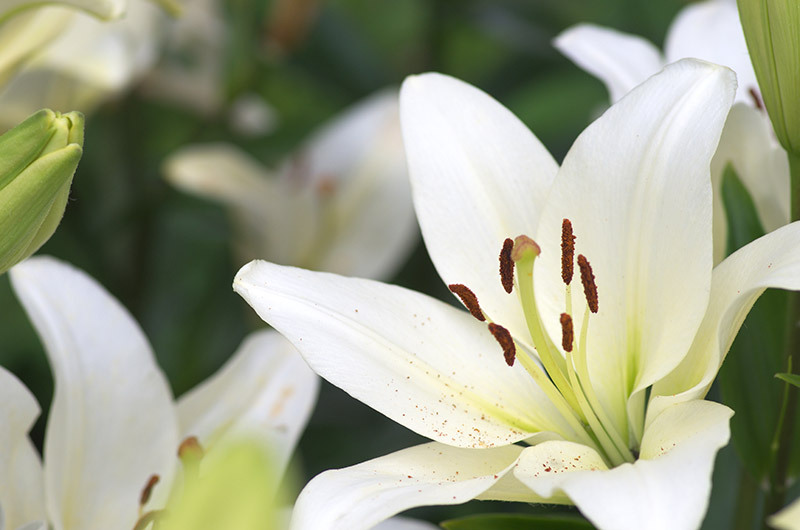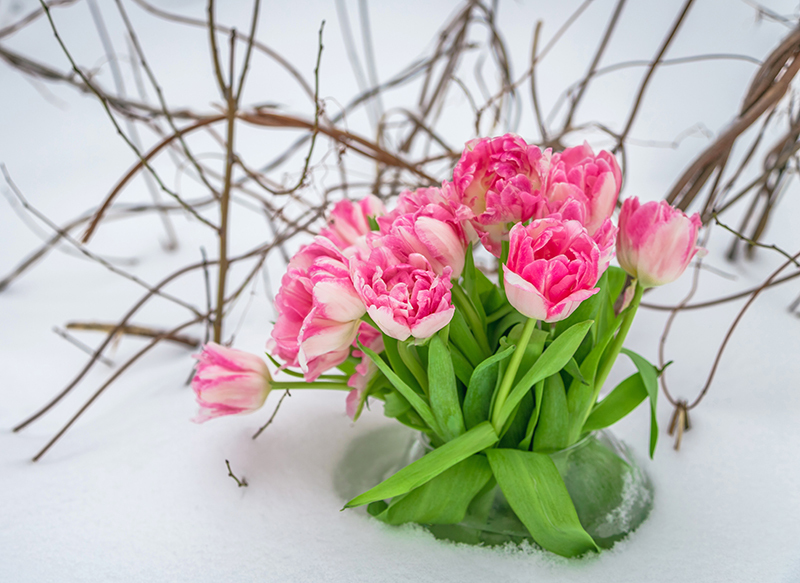Orchid Mastery: The Definitive Care Guide
Posted on 14/08/2025
Orchid Mastery: The Definitive Care Guide
Ornamental, enchanting, and incredibly diverse, orchids have enthralled gardeners and collectors for centuries. If you're seeking to unlock expert orchid care secrets, you've found the ultimate resource. Whether you're a beginner with your first Phalaenopsis or an enthusiast seeking to master vandas and cattleyas, this comprehensive guide will help you on your path to orchid mastery.
Understanding Orchids: An Introduction
The Orchidaceae family is one of the largest in the plant kingdom, boasting over 25,000 species and more than 100,000 hybrids. This remarkable diversity means orchid cultivation can seem intimidating, but with a solid foundation, anyone can experience success.
- Phalaenopsis (Moth Orchids): Beginner-friendly and common in stores.
- Cattleya: Known for their vibrant and fragrant blooms.
- Dendrobium: Hardy and prolific bloomers.
- Vanda: Stunning, large, and demanding bright light.
- Oncidium: Sometimes called "dancing ladies" for their unique flowers.
Tip: Before you can become an orchid expert, familiarize yourself with your plant's specific genus and requirements.

Essential Orchid Care Basics
1. Light: Shedding Light on Orchids' Needs
Light is perhaps the most crucial aspect of orchid plant care. Most orchids thrive in bright, indirect light. Direct sunlight can scorch leaves, while too little light results in poor flowering.
- Phalaenopsis: East- or north-facing windows; avoid harsh afternoon sun.
- Cattleya & Vanda: Thrive in brighter locations; some tolerate filtered sun.
- Leaf Clues: Dark green leaves? Not enough light. Yellowish-green? Ideal!
For indoor orchid care, consider placing your plants near sheer-curtained windows. Artificial grow lights work well for windowless spaces!
2. Water: Quenching Your Orchid's Thirst
Watering orchids is where many newcomers slip up. Overwatering is the leading cause of orchid loss. Roots need air and dislike soggy conditions.
- Use lukewarm, distilled, or rainwater if possible.
- Rule of Thumb: Water once a week in most cases, but always check the potting medium's moisture first.
- Watering Method: Soak thoroughly, allowing water to drain out fully. Never let the pot sit in standing water!
Pro tip: Stick your finger one inch deep into the potting mix. Only water when it is almost dry.
3. Humidity & Air Circulation
Most orchid species come from tropical regions, so orchid humidity is vital. Aim for 40-60% relative humidity. In homes, this often means boosting humidity, especially in winter.
- Set trays of pebbles and water below pots (not touching roots).
- Group orchids together to increase localized moisture.
- Use humidifiers as needed.
Air circulation is just as important--gentle fans help prevent fungal and bacterial diseases.
4. Temperature: Finding the Sweet Spot
Orchids typically prefer day temperatures of 65-80?F (18-27?C) and night temperatures of 55-65?F (13-18?C). Consistent, moderate fluctuations mimic their natural habitats and trigger blooming in some orchids.
- Avoid cold drafts and hot air registers.
- Certain species, like Phalaenopsis, benefit from a 10-degree drop at night to encourage spikes.
5. Orchid Potting Mix and Repotting Fundamentals
Orchids don't grow in soil. Instead, they require airy, well-draining potting mixes such as:
- Bark chips
- Sphagnum moss
- Coir fiber
- Perlite or charcoal
Repot every 1-2 years, preferably after flowering. Gently tease away old mix, and trim any blackened or mushy roots with sterilized scissors.
Orchid Repotting Tips:
- Choose a container just large enough for the roots.
- Ensure ample drainage holes.
- Water lightly after repotting to settle the medium.
Advanced Orchid Mastery Techniques
Feeding: Orchid Fertilizer Fundamentals
For orchid enthusiasts wishing to boost blooming, proper feeding is key. Use a balanced orchid fertilizer (20-20-20) at quarter- or half-strength. Remember: "weakly, weekly" is the golden rule!
- Fertilize every other watering during active growth (spring/summer).
- Flush the pot every month with plain water to prevent salt build-up.
- Reduce feeding in fall and winter when growth slows.
Orchid Propagation: Multiplying Your Collection
Orchid propagation is a rewarding challenge for dedicated plant lovers. Some common methods include:
- Division: Best for sympodial orchids (e.g., Cattleya, Dendrobium). Carefully separate matured growths when repotting.
- Keiki ("baby" orchid): Some orchids, like Phalaenopsis and Dendrobium, produce small plantlets on stems. When roots develop, snip and pot them separately.
- Backbulbs: Old pseudobulbs can sometimes be coaxed into sprouting new growth with warmth and humidity.
How to Get Orchids to Bloom Again
A common frustration is orchids refusing to rebloom. These expert tips will increase your chances of repeating those dazzling flowers:
- Check for adequate light; improve placement if needed.
- Feed gently during growth periods.
- Temperature drops at night in autumn can "kick-start" bloom spikes, especially for Phalaenopsis and Cattleya.
- Be patient--some species only flower once per year, while others bloom several times.
Remember, the leaves and roots must be healthy before blooms can be expected. Don't force the plant; instead, provide consistent, loving orchid care.
Preventing and Treating Common Orchid Problems
Orchid Pests and Diseases
Orchids are susceptible to a variety of pests and diseases, often due to improper conditions. Common issues include:
- Aphids, scale, and mealybugs: Sticky residue and weakened plants.
- Spider mites: Fine webbing and stippled leaves; thrive in dry air.
- Fungal or bacterial rot: Yellowing, black, or mushy spots on leaves and roots.
Solutions:
- Isolate affected plants immediately.
- Swab pests with alcohol-soaked cotton swabs.
- Use insecticidal soap or neem oil for larger infestations.
- Improve air circulation to deter fungi and bacteria.
- Prune off infected parts with sterile tools.
Leaf and Root Troubleshooting Guide
- Wrinkled or limp leaves: Indicates under-watering or root rot from overwatering.
- Yellowing leaves: Often natural aging, but can signal too much sun or nutrient imbalance.
- Mushy or dark roots: Signs of rot; check watering practices and repot if necessary.
Orchid Varieties: Tailoring Your Care for Success
Each major type of orchid requires some nuances in care. Here's a quick guide:
- Phalaenopsis (Moth Orchid):
- Prefers stable, indirect light and moderate watering.
- Blooms for months, often twice a year with proper care.
- Cattleya:
- Loves bright filtered light.
- Let the medium dry between watering cycles.
- Known for striking and fragrant blooms.
- Dendrobium:
- Needs more light and can tolerate drier conditions between waterings.
- Some require a cool, dry rest to induce flowering.
- Oncidium:
- Enjoys high humidity and dappled sunlight.
- Don't let them get totally dry between watering.
- Vanda:
- Requires maximum light, frequent watering and high humidity.
- Often grown in baskets without any potting medium.
Orchid Growing FAQ
How do I know when to water orchids?
Insert your finger an inch deep into the potting medium. If it feels dry, it's time to water. Orchid roots should never sit in waterlogged conditions. Err on the side of dryness rather than overwatering.
Do orchids need special pots?
Yes, they need containers with ample drainage holes. Clear plastic pots are popular because they allow for root inspection and mimic natural, light-loving root environments.
When should I repot my orchid?
Every 1-2 years, or sooner if the potting medium breaks down, roots overgrow the pot, or you notice rot or disease. Always wait until after the blooms fade.
How can I get my orchid to flower again?
Increase light (gradually), ensure a night-time temperature drop of 10?F (5?C), and feed lightly during growth periods. Prune spent flower spikes to encourage new shoots.
5 Common Orchid Mistakes (And How to Avoid Them)
- Overwatering. Allow pots to drain thoroughly; avoid constantly soggy media.
- Lack of light. Move orchids closer to a window or supplement with grow lights.
- Ignoring humidity needs. Use trays, groupings, or humidifiers if air is dry.
- Repotting too frequently. Only repot when necessary.
- Feeding too much. Remember: dilute fertilizer, applied sparingly, is best.

Orchid Display and Styling Inspiration
The art of orchid cultivation goes beyond care--it's about creating a beautiful display that showcases these living jewels. Consider:
- Hanging baskets for Vanda orchids in bright sunrooms.
- Grouping several Phalaenopsis of different colors for a striking table centerpiece.
- Mounting mini orchids on cork bark for a natural, tropical vibe.
- Elegant glass vases or terrariums for humidity-loving varieties.
Let your creativity and passion for orchid care enhance your home's atmosphere and invite admiration from guests!
Conclusion: Your Path to Orchid Mastery
With this comprehensive orchid care guide, you're well-equipped to nurture vibrant, healthy plants that will reward you with stunning, long-lasting blooms. Remember: patience, observation, and a willingness to learn are the keys to becoming a true orchid master.
Start with the basics, graduate to advanced techniques, and always approach your orchids with care and respect. Their adaptability and intrigue will repay your efforts many times over.
Happy growing, and may your orchids thrive!
Latest Posts
Creating a Blooming Oasis with Hydrangeas
Dive Into the Meaning of Your Birth Flower
Orchid Mastery: The Definitive Care Guide







